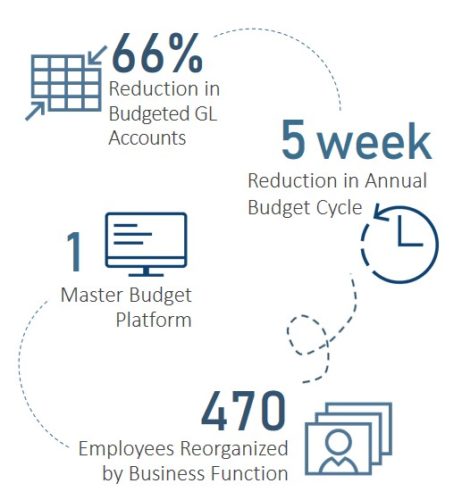Project Overview
The Information Solutions [IS] group at MUSC provides information technology and systems infrastructure services to both the clinical & academic enterprises – spanning a state wide footprint with 10,000+ employees and nearly 150 discrete locations. The IS team is comprised of 450+ personnel, employed across three distinct MUSC entities, and has a combined operating budget of $100M.
Historically, MUSC’s budget processes were siloed by entity, requiring the IS team to understand and comply with three different sets of timelines, approval processes, systems, etc. In contrast, IS operated as an integrated, inter-enterprise department. As such, in preparation for the FY20 budget cycle, IS sought to align its planning processes with the way it operated as a system wide, shared service.

The Solution
KCG was engaged by MUSC IS to redesign its approach to business planning and budgeting to better support and reflect business operations. The goals of this new process were to create greater transparency into business activities, appropriately distribute planning and budgeting responsibilities, and drive leadership accountability and engagement in ongoing budget management. To accomplish this, KCG focused on three key areas:
Structure
- Restructured the IS organization and cost center hierarchy to optimize operations; re-aligned 470 employees based on the actual operating model, rather than legacy employment entity
- Distributed budget accountability across six IS leaders, ensuring decisions were informed by IS SMEs, rather than a finance liaison
- Utilized business driver methodology [e.g. FTEs, space utilization, etc.] to allocate costs across end users; leveraged a joint finance committee to approve cost ‘splits’ and true up ‘due to/due from’ balances throughout the year
Process

- Introduced a structured financial calendar and clear expectations of leadership to drive participation in the budget process
- Implemented a rolling forecast process, enabling nimble real time decision making and condensing budget cycle by five weeks
- Implemented a zero-based budget approach for accounts over $2M to identify cost savings opportunities
- Simplified and standardized planning level of detail – reducing total number of planned GL accounts by more than 2/3rds
Technology
- Transitioned to a single budget system – serving as the single source of truth and driving transparency across the enterprise
- Developed and facilitated trainings on budget processes and systems to ensure leaders were best positioned for success







